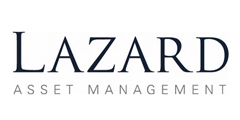While MIFID II is looming at the start of 2018, there is still a lot of uncertainty as to what is required. Key areas of concern are evidencing the cost breakdown of transactions, demonstrating suitability, reporting transactions and product governance.
Headlines:
- Evidencing and reporting the complex cost breakdown of many transactions is a challenge for all firms
- There is a risk that in the process of demonstrating suitability, the trade can actually be delayed, potentially disadvantaging the client.
- The guidelines on product governance are not clear around level of detail required.
Key issues and challenges:
The conversation started with industry players acknowledging that they need to communicate the regulatory changes to their clients in their own way.
Topic 1: Charges
- Participants mentioned that the deadline to manage this from the regulator was a challenge for them. Some firms were asked to provide 3-5 years’ worth of data but don’t have enough time to prepare for this and as a result, are having to prepare an interim report for submission.
- The other issue they are faced with is that product providers are coming back to them for back-filled data. From the regulatory standpoint, the regulators are highlighting as important, the templating of delivery that allows for consistency of the approach in putting together costs, as the main goal. Advisory and execution-only services are trying to establish and make clear the costs upfront.
- Participants of the conversation pinpointed that one can arrive at different results based on different assumptions. The recommendation in this case was that during the project, when making judgements and assumptions, it is necessary to record those, so that a firm can demonstrate why and how the assumptions were made, if queried.
Topic 2: Transaction reporting
- An example of issues related to this topic from the industry players was how to treat an abandoned trust, for instance. One issue that regulators run into is that some firms’ understanding of the contractual relationship is just not there. The principle to follow should be “No LEI, no trade.”
- However, in connection with this, there is a difficulty in obtaining the LEI (Legal Entity Identifier) when applying for it in a different jurisdiction. From the regulators’ perspective, the LEI issue time has been speeded up because there were fewer applications than expected.
Topic 3: Suitability
- The issues related to suitability were risk profiling, and practical issues such as extension suitability.
- An example of a problem encountered by the industry: if an RM is speaking to a client on the phone, he can execute the transaction and provide the suitability report. But when if he’s in the clients’ home for instance, he has first got to get the suitability report approved, and then execute.
- The question here is how to reconcile this with the need to promptly execute on behalf of the client. From the regulatory standpoint, the debate in this area is what is covered by Terms and Conditions and what is not.
- Another area considered in this part of the conversation was about switching securities, identifying the cost benefit and performing this analysis. Under RDR, the switching was not permitted, but under MIFID this is allowed.
Topic 4: Product governance
- “It is about what tools you have in your toolbox to execute a trade and/or make a recommendation.” In terms of product governance, what’s unclear is the level of detail required. This is because MIFID II is owned by policy guides, not the supervisors. There has been good work done on this template, and also on completing the supporting documents.
- The area of concern here is the information exchange; it’s an exchange of relevant information. From the regulator’s standpoint, the recommendation for the firm is to make sure there is a review process of the T&Cs and has ownership in this area.
- On compliance, it’s all about the overall effectiveness of product governance.
Conclusions and solutions - To prepare for compliance with MIFID, recommendations for all firms are to make sure that the projects are in place to deal with the demands of the new regulations and that senior management are fully engaged with the process.
Chair: Tony Maddock, Lazard 
Expert: Ian Cornwall, PIMFA
Factilitator: Ben McNeil


